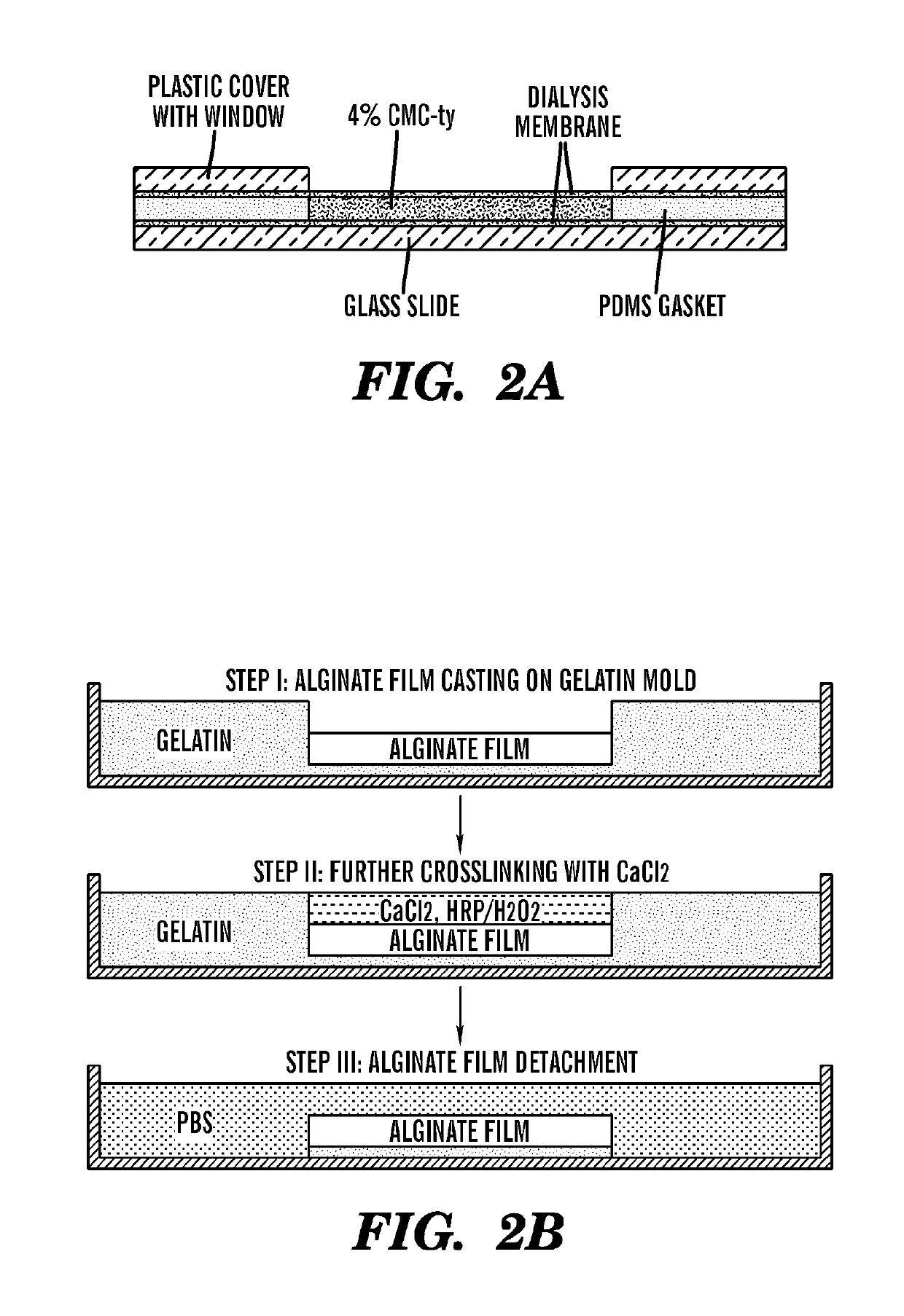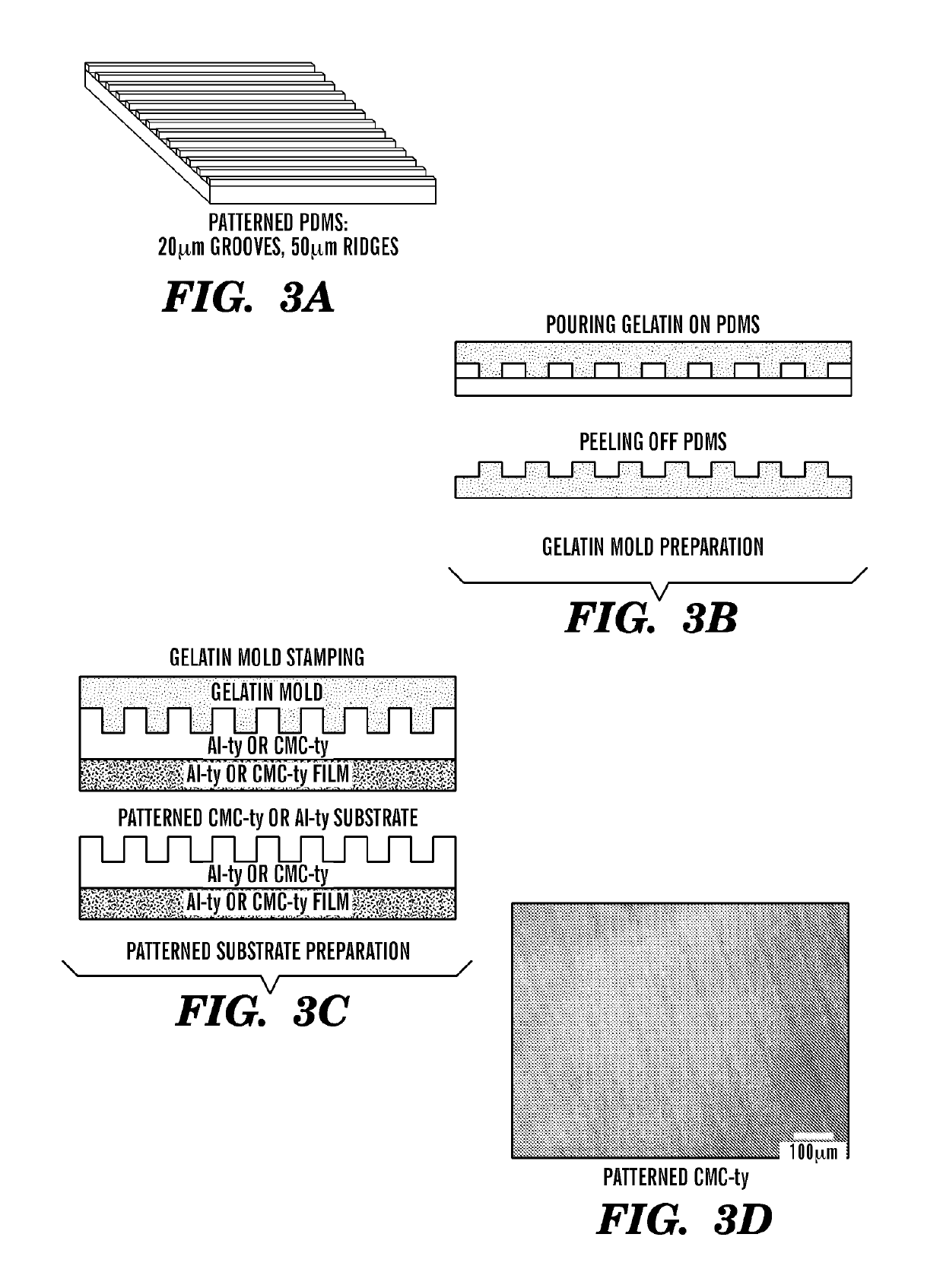Multi-layered cell constructs and methods of use and production using enzymatically degradable natural polymers
a multi-layered cell and natural polymer technology, applied in the field of tissue engineering and regenerative medicine, can solve the problems of poor mechanical properties of the tissues, limited clinical efficacy of synthetic-, allogeneic or xenogeneic-engineered tissues, and system to grow engineered tissues that do not offer simultaneous control of all these physiochemical properties, so as to facilitate the formation of blood vessels, facilitate the construction of vascular three-dimensional tissue constructs, and high cell viability
- Summary
- Abstract
- Description
- Claims
- Application Information
AI Technical Summary
Benefits of technology
Problems solved by technology
Method used
Image
Examples
example 1
[0347]Tissue structure is directly related to its function.1-3 In order to recapitulate native tissue structure over the length scales required for tissue function, one must control cell movement and cell-ECM interactions.4-6 Ideally, substrate topology should provide directional guidance to induce desired cell migration and alignment. Biomechanical environment control such as surface modulus as well as temporal and spatial profile of growth factors should modulate cell phenotype and proliferation to achieve cell self-assembly on cell-secreted ECM only.8-9 Whereas, conventional tissue engineering has attempted to control these physicochemical parameters individually,7,10,11 cell sheet technology has been recently suggested to control some of these parameters simultaneously; in cell sheets, cells and cell-secreted ECM are integrated in the form of a sheet without any artificial materials.12-14 Patterned cell sheets could mimic 2D native structure of target tissue, and proper stacking...
example 2
Al-Ty Film and CMC-Ty Film Fabrication
[0348]A one-percent Al-ty film gelated by both HRP and Mg2+ based crosslinking displayed sufficient structural rigidity to be used as backing film supports for Al-ty substrates for the cell sheets. Also a 4% CMC-ty film gelated by only HRP crosslinking was rigid enough to be transferred by forceps when the thickness of the CMC-ty film was increased two folds thickness of Al-ty film. In the degradability test, both films were completely degraded in 90 minutes.
Topographical Surface Patterning of Al-Ty and CMC-Ty Substrate
[0349]Using the gelatin (ridges (20 μm) & grooves (50 μm)) stamp method and a specific ratio (i.e. Al-ty (1%): HRP (29 U / ml): H2O2 (334 mM)=100:5:10) of solution mixture, the inventors demonstrated that a clearly patterned surface (ridges (50 μm) and grooves (20 μm)) was possible on both CMC-ty and Al-ty substrate (FIG. 3D). Type I collagen adsorption promoted cell attachment and proliferation (FIGS. 3E-H). Additional embodiments ...
example 3
[0354]The present disclosure involves a degradable natural polymer hydrogel based cell sheet harvest and transfer system that yields high cell viability and preserve topographical cell alignment after stacking. Cell sheet technology possesses many advantages; properly patterned cell sheet consists of cell and cell-secreted ECM without artificial materials and accurately mimics topological characteristics of 2D structure of target tissue. Stacking cell sheets according to the anatomy of target tissue could reproduce tissue function.
[0355]In this study, cultured cell sheets on topologically patterned hydrogel substrates were transferred onto other cultured cell sheets to form a stack of cultured cell sheets that consist of patterned or not patterned cell sheets. The capability of the system was assessed for ability to produce highly viable cell sheet stacks that preserve initial topological characteristics after stacking. Various cell types (NIH 3T3, HUVECs, hMSCs) cultured on both hy...
PUM
| Property | Measurement | Unit |
|---|---|---|
| inner diameter | aaaaa | aaaaa |
| inner diameter | aaaaa | aaaaa |
| elastic modulus | aaaaa | aaaaa |
Abstract
Description
Claims
Application Information
 Login to View More
Login to View More - R&D
- Intellectual Property
- Life Sciences
- Materials
- Tech Scout
- Unparalleled Data Quality
- Higher Quality Content
- 60% Fewer Hallucinations
Browse by: Latest US Patents, China's latest patents, Technical Efficacy Thesaurus, Application Domain, Technology Topic, Popular Technical Reports.
© 2025 PatSnap. All rights reserved.Legal|Privacy policy|Modern Slavery Act Transparency Statement|Sitemap|About US| Contact US: help@patsnap.com



